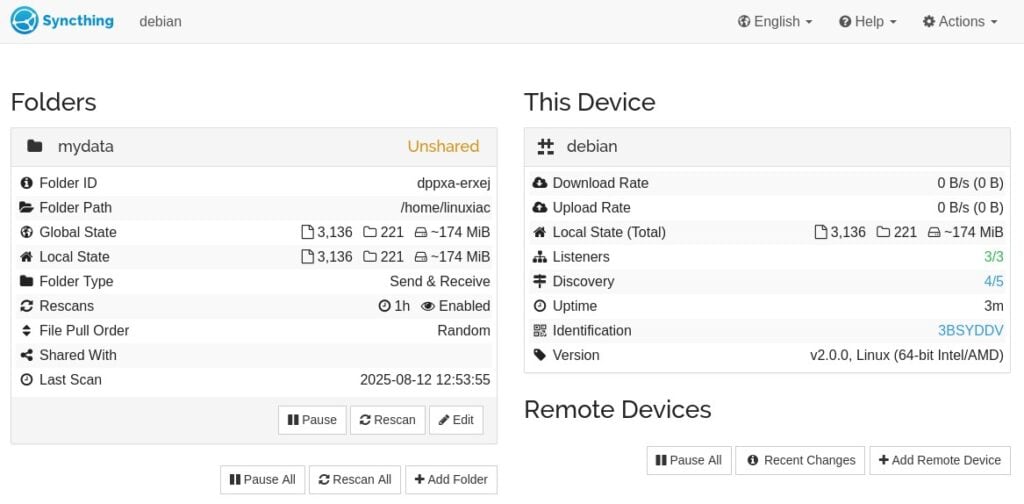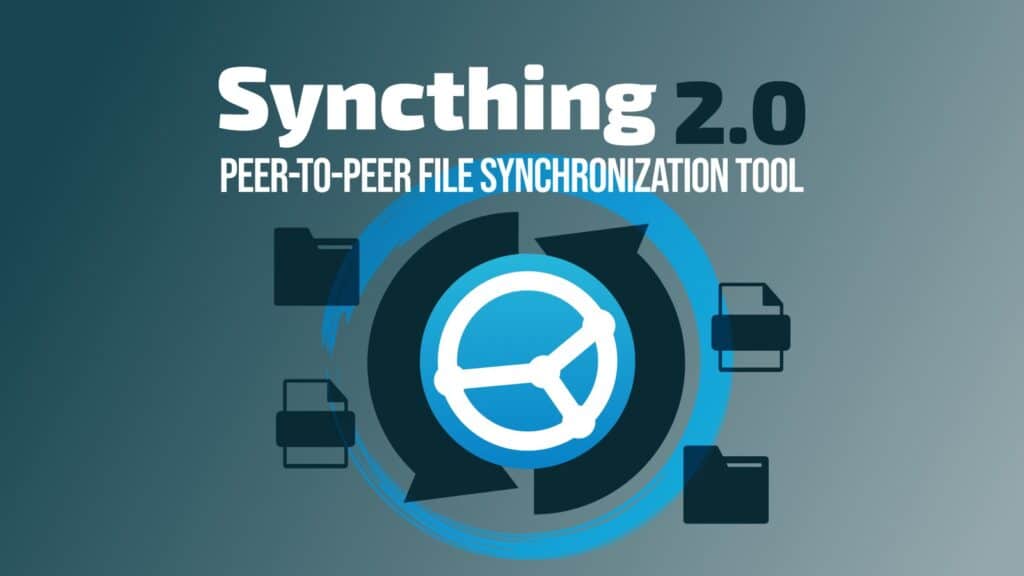Syncthing, a beloved by many self-hosting enthusiasts peer-to-peer file synchronization tool that lets you keep folders in sync across multiple devices without relying on a central server or cloud storage provider, has released the long-awaited version 2.0 — its first entry in the new 2.x series.
First things first – the developers caution that users should “expect some rough edges and keep a sense of adventure.” Still, the update also delivers a significant set of improvements, cleanups, and changes that lay the groundwork for the future.
One of the biggest shifts is the move from the LevelDB database backend to SQLite. This change should make the database easier to maintain and less prone to bugs, though the migration process during the first launch might take a while for users with large setups.

Alongside that, logging has been modernized with structured entries, per-package log level control, and a new WARNING level between INFO and ERROR. The command-line interface has also been streamlined, with old single-dash long options removed, some options renamed, and others reorganized into subcommands.
On the housekeeping front, Syncthing will no longer keep deleted items in the database forever—they’re now forgotten after six months by default, though this can be adjusted or disabled.
Performance also gets a boost as rolling hash detection of shifted data has been dropped, resulting in faster scans and syncing. The “default folder” is gone, and multiple connections are now standard between v2 devices, helping speed up metadata and file transfers.
However, not all news is good for every platform. Due to cross-compilation challenges with SQLite, prebuilt binaries are no longer provided for certain systems, including DragonFly BSD, Illumos, Solaris, Linux PPC64, NetBSD, and some OpenBSD and Windows ARM variants.
Under the hood, there’s a long list of bug fixes and enhancements. Highlights include better handling of deleted file conflict resolution (where deletion can now be the “winning” outcome), the use of Ed25519 keys for sync connections, an option to limit LAN bandwidth, and support for UDP port mapping with QUIC. Many improvements also target memory efficiency, code cleanup, and build process streamlining.
For a full list of all changes in Syncthing 2.0, see the changelog.
If you’re thinking about giving Syncthing a try, our guide, “How to Set Up and Use Syncthing to Sync Files on Linux,” will walk you through everything so you can get up and running quickly and hassle-free.

I need a real good tutorial for showing how to do the syncthing 2.0 upgrade. I tested the water with my syncthing 1.30 on Ubuntu 24.04 and it was a total failure. stystemctl shows the service failed after the install via apt. Returned to the older version and everything is fine again.
better off using something else I have same issue as you and this issue feels like a repeat issue I had years ago and it could take months or years to resolve if they are still improving things really slowly.
Beloved? Only if you don’t care about your time and sanity would you love this mess of a software. Self hosting it is a nightmare. Not touching it again even with a ten foot pole.
I love syncthing but share your sentiment as well.
Does Syncthing still need to run on both sides of a peer to peer network?
My main (windows) PC has media in shared directories. I mount these in Linux, as read only.
Then, I use *rsync* to update Linux copies. Main PC goes off-line, and Jellyfin now has a new subset of media to choose from.
No windows hosted software required.
I have never used syncthing and probably never would since this software does not have a very good history of ongoing real project support over time. If I was going to use something like this I would probably just use resilio sync which is a lot better version of this and most likely more secure. Resilio sync was called something else prior to that name and when they commercialized it syncthing was basically a project in response to that but in my opinion it never compared to resilio sync when in came to how it did things since it did things differently and not as securely in my opinion plus resilio sync has always been free for personal use and is way better supported. I have not used resilio sync in forever but I was around when these things first started and remember using a official ppa for resilio sync.
Rubbish.
You’ve never used Syncthing, but you expect us to respect your opinion on the project? I’ve never used your Mom. Should you respect my feelings on her? lol
This is such a a terrible collection thoughts. You haven’t used this update. It sounds like you possibly never used the product at all. You haven’t used the product you’re comparing it to in a long time. You give no code or architecture specifics on what is better or worse. Negative criticism requires more. Do better.
This is like comparing apples to oranges. Syncthing is open source, your chosen solution based on your personal feelings is not